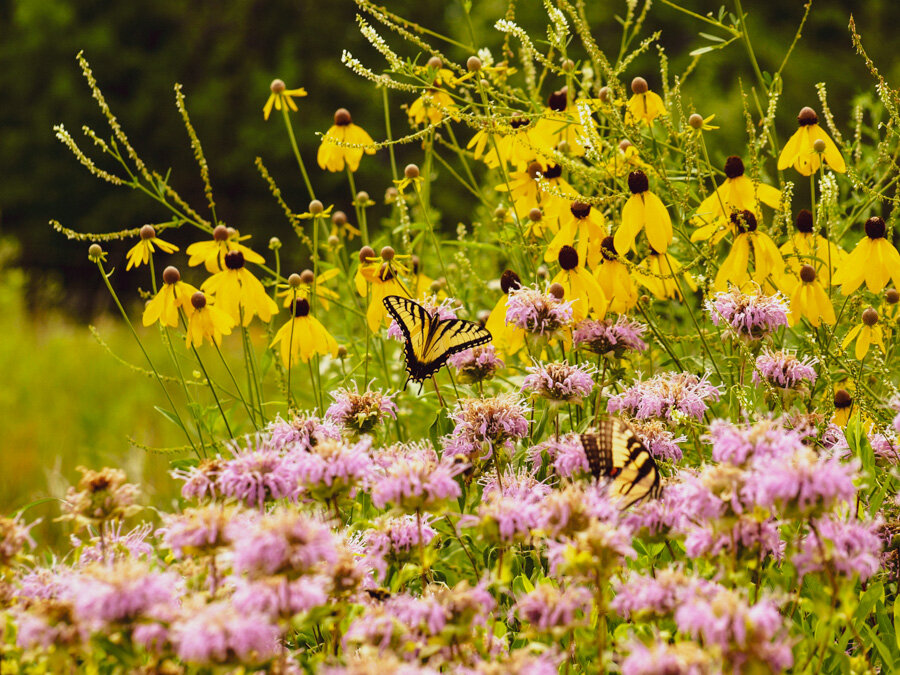Green Burial
How your interment preserves the land for future generations.
What is Green Burial?
How we care for our bodies at the time of passing is our final choice here on earth.
Green burial is a way of caring for our departed loved ones while also caring for the natural world. A green burial uses non-toxic and biodegradable materials and avoids use of chemicals or materials that may harm the surrounding environment. These methods conserve natural resources, reduce carbon emissions, protect public health, and restore habitat.
Burials in the conservation cemetery will be prepared in accordance with the Green Burial Council natural methods for body preparation and interment, allowing all who are laid to rest to be surrounded by life as they return peacefully to the earth.
Why Choose Green Burial
Green burials appeal to many for their simplicity, affordability, focus on family involvement, and connection to nature. Conservation burial goes a step further in protecting a large tract of natural land as well as interring remains in large plots that prevent disturbance to the surrounding plants and wildlife.
In choosing conservation burial, you are joining a community in protecting a nature preserve that will be here for future generations.
The Coastal Prairie Conservancy is proud that we have established our state’s first conservation cemetery through our Nature’s Burial Initiative, and our goals include:
The establishment of a conservation cemetery that also serves as a nature sanctuary for our community;
The ability to honor the recently departed while also preserving a piece of Texas forever; and
The opportunity for individuals to celebrate life in a way that is natural, meaningful, simple, and affordable.
When you choose conservation burial, you are choosing a living, natural, and lasting memorial.
Green Burial and Cremation
Many Americans who had formerly considered cremation are now choosing green burial. Green burials avoid the use of fossil fuels and the release of greenhouse gases and toxins that are inherent in traditional cremation. A green burial allows one’s body to return naturally to the earth.
For those who have chosen cremation, cremated remains (“ashes”) may be interred in the conservation cemetery as well. In addition to providing a final resting place for the remains, this will provide a lasting, positive impact by helping to protect natural lands forever.
History of Green Burial in the US
Green burial has received more attention in the media in recent years as an innovative way to care both for our loved ones and the earth, but green burial is not a new concept. Caring for a loved one’s body and interring their remains naturally was the standard practice in the United States until 100-150 years ago, and natural burial is still the most accepted, common practice in nations across our globe.
Cultural changes in the late 1800s led to the prevalence of formal cemeteries and body preservation practices here in the United States. These factors stemmed from historic shifts during the Civil War and Industrial Revolution.
EARLY 1800’S
American cemeteries during the 19th Century’s Industrial Revolution were valued as rural park space for increasingly urban residents. The rural cemetery park movement borrowed from pastoral English landscape traditions and provided a key service for American families since most US cities did not have organized park systems or botanic gardens. Cemeteries with open landscapes and widely spaced trees allowed for picnics, carriage rides, and casual walks.
During this time, increasing levels of casket ornamentation and grave monumentation also took place as funeral directing became a more established profession that provided a greater array of goods and services.
Early funerals in the United States had been led by families, including a viewing held in the family’s parlor before a simple burial on family or church land. With the advent of funeral homes and formal cemeteries, wealthier families were able to host services outside their homes at funeral parlors, initiating the shift from labeling the home’s front room as the “parlor” to the “living room.”
MID TO LATE 1800’S
The casualties during the Civil War took a vast toll on our nation. Many soldiers died in battle far from their families and homes. The development of embalming became a mainstay in our nation’s funeral practices after President Abraham Lincoln encouraged embalmers to follow behind battles where they would then preserve soldiers’ bodies so that the bodies could then make the long journey home for a viewing and burial.
When President Lincoln was assassinated tragically, his own body was also embalmed and then taken by train across the nation for large-scale viewings before his own interment in Illinois.
Embalming then became the favored cultural practice, largely unique to our nation, to show deference and “proper” care for the body.
LATE 1900’S
The current green burial movement emphasizes a return to simple, natural body care and protection of our nation’s habitats.
The first conservation cemetery in the United States was Ramsey Creek Preserve, established in 1998 by Dr. William and Kimberley Campbell in Westminster, South Carolina. Ramsey Creek became an important site for researching and establishing standards for future green cemeteries. In 2005, the Green Burial Council was founded to oversee certification standards within the growing green burial movement, and Ramsey Creek became the first certified Conservation Burial Ground.
Early leaders brought together experts from the fields of sustainable design, restoration ecology, conservation management, law, and consumer affairs to establish standards and foster the creation of new green burial grounds.
TODAY
Today, the Green Burial Council has grown to become the standard-bearer and lead steward of the green burial movement, ensuring that end-of-life practices further environmental protection in all the ways we care for our departed.
Nature’s Burial is proud to be a member of the Conservation Burial Alliance as we further this mission in Texas. There are an estimated 50,000 cemeteries in the state of Texas. The Coastal Prairie Conservancy’s cemetery will be our state’s first conservation cemetery. You can read more about green burials on the Green Burial Council website.




